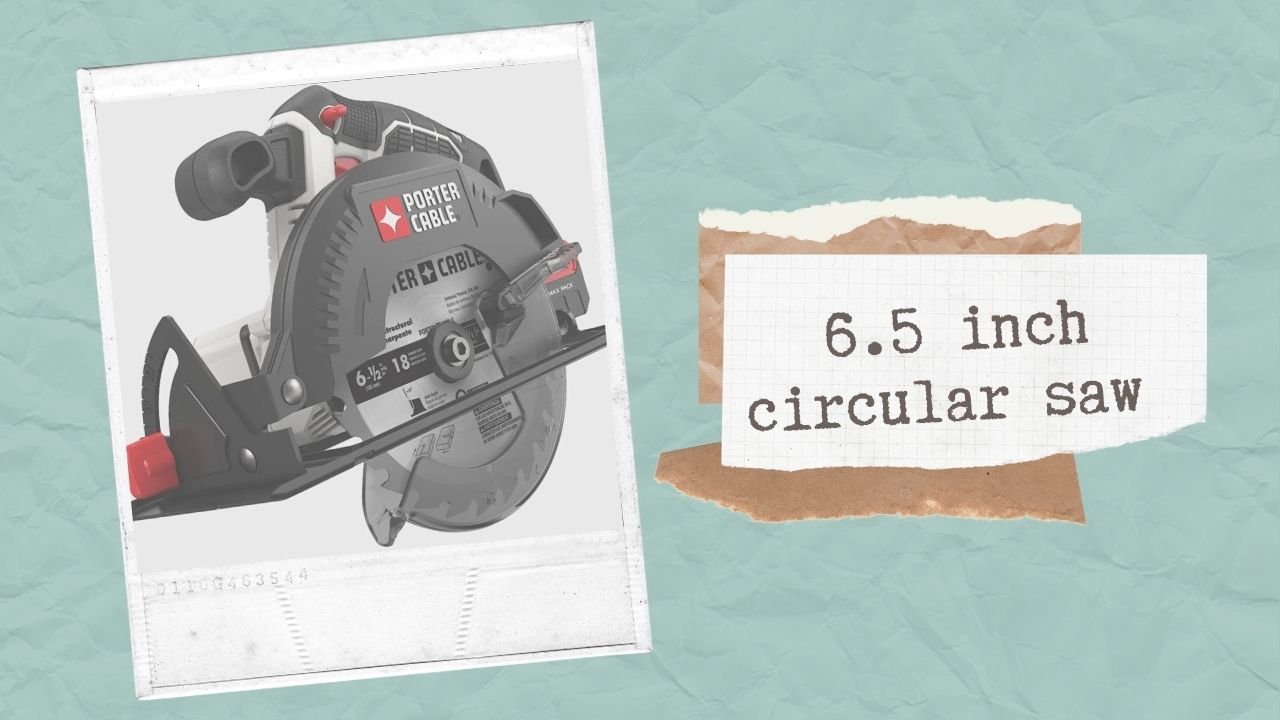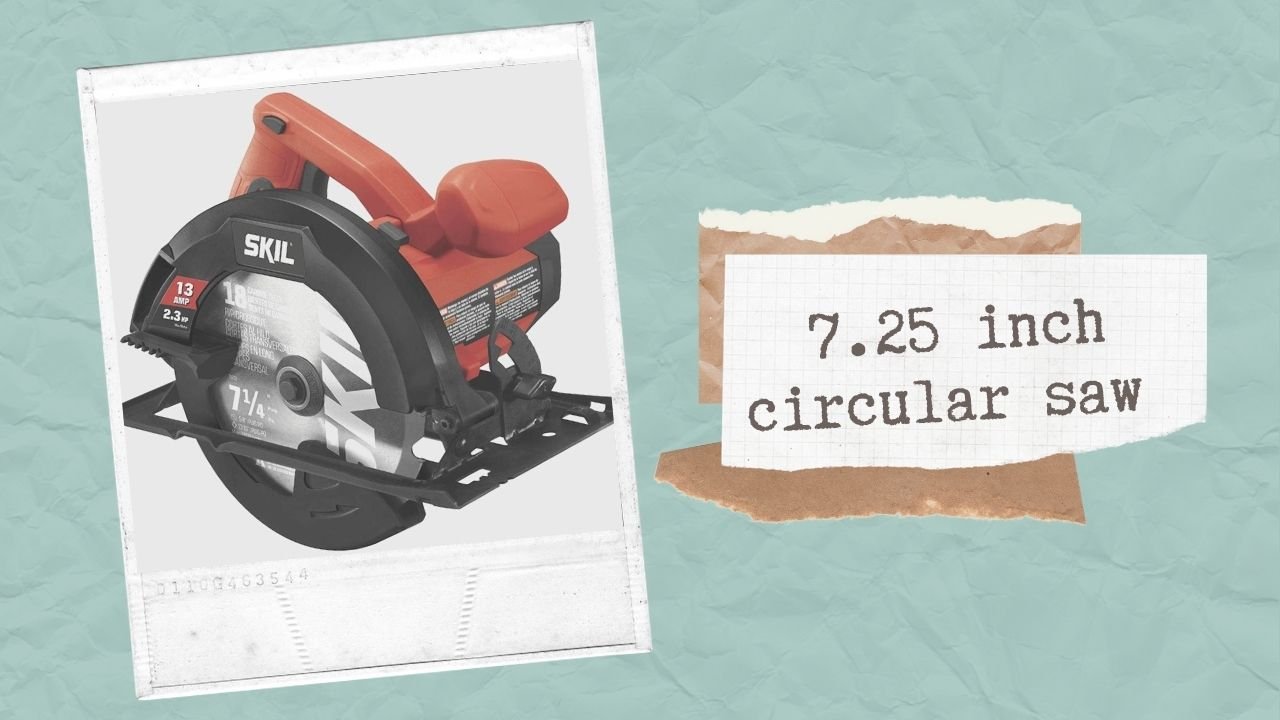Table of Contents Show
For most DIY woodworkers or enthusiasts, a cordless portable circular saw is a must-have tool to deal with wood stocks that are 4 inches thick.
Beginners often get confused when it comes to 6.5 vs 7.25 circular saw. Although the price difference isn’t that much, both handle light-duty wood cutting well.

As your curiosity led you here, this article will get you some basic information regarding the blades, and help you decide to pick the right one for your needs.
Read Also:
What is 6.5 Circular Saw?

The title pretty much explains it all. It’s a saw, featuring a 6.5-inch circular blade to cut wood pieces and other materials. Woodworkers primarily use this saw for light-duty wood cutting. Due to its smaller size, a 6-inch circular saw comes in handy for portability.
What is a 7.25 Circular Saw?

You probably guessed it right. It’s a saw with a 7.25-inch blade. Compared to its competitor, this one can be used for thicker stocks. So, if you need more cutting depth, this particular one would be the most accurate cordless circular saw to handle moderate duty woodworking jobs.
Apart from the cutting depth, the most exciting feature of this saw blade is that you can achieve bevel cuts on the wood pieces at 45 degrees. Compared to a 6.5 inch saw, this one is compatible with a wide range of tipped blades.
Difference Between 6.5 vs 7.25 Circular Saw
If you don’t have much time to go through the entire article, this table will sum up about both the saws for your convenience.
6.5 Circular Saw | 7.25 Circular Saw | |
Size | Features a 6.5-inch circular blade | Features a 7.25-inch circular blade |
Cutting Depth | Up to 2.5 inch | Up to 4 inch |
Weight | Lightweight | A bit heavier |
Angular Cut | No | Yes, at 45 degrees |
Blade Availability | Limited blades | Lots of different blades are available |
| Price | Costs less | Relatively costs more |
6 ½ Circular Saw Applications
It feels quite tempting to use a portable and small-sized circular saw for DIY purposes. DIY works that mostly deal with stocks, wood pieces, or other materials of less thickness and small in diameter, the saw is pretty much enough to handle the tasks.
Even if your workloads require you to work for a prolonged period, still you will less likely experience any fatigue issue in your hands, thanks to its small-sized blade. So, like most small blade circular saws, this one stands out with larger blades regarding portability and weight.
Don’t compromise portability and lightweight if you deal with thin stocks for a prolonged period. Cutting a load of 2.5-inch stocks will require a lightweight tool to make you feel comfortable.
With a 6.5 inches saw blade, you will be able to easily cut through wood pieces or stocks that are 2 inches in diameter.
Don’t expect this small saw blade to cut through more than 2.5 inches deep. This is the maximum depth you will be able to work with. However, the depth is adjustable on most tools as per the works require.
If you mostly deal with wood pieces of 2.5 inches or smaller size, cutting sheets for roof jobs, and other similar light-duty wood cuttings, this circulating saw will buy you some comfortable and easy to work experience whether you work in the backyard or worksites.
When you don’t go deeper than 2.5 inches, definitely you should get a circular saw that features a 6.5-inch blade.
Lighter duty tasks require ease of access as well as portability, this is where a circular saw is hard to beat and has an upper hand over the 7.5 inch one.
You can try bevel cuts, but the finishing will not be much satisfying.
Advantages
- Smaller and more portable
- Doesn’t make the hand fatigue
- Less expensive
Disadvantages
- Less powerful
- Cannot provide deeper cuts
7.25 Inch Circular Saw Applications
If you are to mostly cut through 4-inch wood pieces or other materials, the blade will buy you some decent performance. Even if you have to occasionally cut through stocks or other materials of 4 inch in diameter, go with a 7.25 inch one, it would be worth spending the extra penny.
Also, as the blade is perfect for angular bevel cuts, if your woodworking requires such cuts, no reason to go for a smaller blade. It can handle bevel cuts at 45 degrees without any issue.
Another thing that might provoke you to go for this circular saw is that blades are widely available for 7.25 inches. You will find different types of blades with different tips that are designed for specific jobs.
This larger blade is for more depth cutting whether it’s on a regular basis or this is something you deal with occasionally. However, due to the large blade, the saw feels a bit heavier but doesn’t much to the extent that you will feel uncomfortable while holding this for a long time.
Advantages
- Makes deeper cuts
- Can cut bevel cuts at 45 degrees
- For moderate duty usage
Disadvantage
- A bit heavier
- More expensive
Frequently Asked Questions
1. Can I use a smaller blade on my circular saw?
It’s not recommended to use either a smaller or larger blade on a circular saw than what the manufacturer recommends to use. If the diameter of the blade slot fits well for a slightly smaller blade, you can go for it. Make sure the blade is tight.
2. Can you use a 7 blade on a 7 ¼ saw?
Most 7.25-inch table saws are compatible with a 7-inch blade, as the size difference isn’t much.
3. What size circular saw to cut 4×4?
A circular saw with a 7.25-inch blade would cut 4×4 materials without any issue.
4. How deep can a circular saw cut?
The cutting depth depends on the blade size. A 6.5 and 7.25-inch blade can reach 2.5 and 4 inches deep respectively. Larger ones can cut up to 10 inches.
5. Best 7 ¼ circular saw blade for plywood?
A 7 ¼ inch saw blade with 60 to 80 teeth can handle plywoods well.
Conclusion
Hopefully, you don’t have any confusion regarding the saws and can purchase the one for your needs without any hesitation. If someone asks you regarding 6.5 vs 7.25 circular saw, you can suggest him/her considering cutting requirements like an expert.










